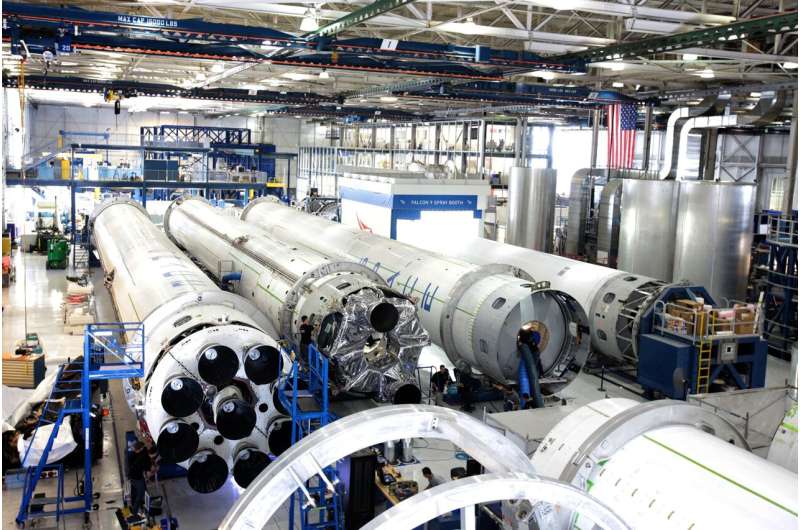Credit: Pixabay from Pexels
EU researchers have successfully designed and validated an innovative redox thermochemical energy storage reactor/heat exchanger that promises to make a concrete contribution to the EU's energy and climate change ambitions.
The RESTRUCTURE project, which officially ended in January 2016, performed the validation at a semi-pilot scale system of about 74 kWh capacity and was constructed and operated at the Juelich Solar Tower (STJ), Germany.
Although the storage capacity was relatively low, this was the first time that such a concept was validated under near-realistic conditions for thermochemical heat storage applications.
Producing the redox honeycombs
'The novelty of the [RESTRUCTURE] reactor design relates to the use of a monolithic honeycomb ceramic structure as its building block, in which the active material can be incorporated via several ways,' explains project coordinator Dr George Karagiannakis. 'This structure is very similar to the ceramic 'bricks' used in the catalyst converters in motor vehicles.'
Regarding the materials used, Dr Karagiannakis outlined that they are metal oxide-based (e.g. cobalt oxide and manganese oxide). Substantial development was required within the project framework, in order to produce the full-scale redox honeycombs, and several challenges had to be confronted by the project team.
Prominent examples of such challenges included achieving a good compromise between structural stability under operating conditions and redox performance, as well as scaling-up of production strategies initially developed at a laboratory scale. However, the project consortium had already anticipated most of these challenges and in several cases developed fall-back options to be held in reserve.
The advantages that monolithic honeycomb structures can provide are related to the simpler reactor design that they can offer and the inherent modularity of such a system.
'Of crucial importance, issues such as special measures to prevent high temperature drop build-up during operation, material recirculation, and extra safety measures associated with efficient particles containment in the system must be considered when 'conventional' powder/small particles in fixed or moving reactor designs are targeted,' elaborated Dr Karagiannakis. 'This may increase system complexity considerably and consequently decrease overall efficiency. However, none of these issues are of particular concern when honeycomb reactor designs are considered.'
Configuration of the reactor/heat exchanger system
Throughout the duration of the project, extensive tests were first performed at lab-scale to identify and validate suitable formulations. The semi-pilot system developed was an assembly of honeycombs, which were essentially scaled-up structured bodies on the basis of the small-scale test results.
The redox schemes investigated in the RESTRUCTURE project require maximum temperatures of around 1000 degrees to be able to operate, and such high temperatures are currently not available in existing commercial CSP plants.
With a storage power capacity of about 25 kW, the system was fed by a side-stream of the hot working fluid (i.e. hot air) produced by the solar receiver at the STJ test site.
During charging, and due to the fact that the maximum temperature of hot air provided by the solar receiver was approximately 700 degrees, to achieve the required temperature of 1000 degrees for the charging reaction, a burner was used to provide the additional heat needed. During discharge, colder air passed through the charged monolithic assembly and heat produced was dissipated from this flow, thereby increasing its temperature at the reactor/heat exchanger outlet.
In this way, part of the energy contained in the air flow is stored in the honeycombs and the flow exits the system at a lower temperature, but still adequately high enough to drive a power cycle and produce electricity. When energy from the sun is not available, the air flow temperature drops substantially, but when forced to pass through the storage system a heat-release reaction is triggered, thereby increasing the temperature of the air, which is again used to operate the power cycle.
Post-RESTRUCTURE and next steps
Dr Karagiannakis has emphasised that the approach taken in RESTRUCTURE is considered as 'next generational' and that the technology's future commercialisation depends strongly on the successful industrial development of next generation/high temperature/high-efficiency CSP technologies. This is currently in progress but outside of the formal scope of the project itself.
'We are intensively seeking ways of continuing our research efforts and further developing the technology,' Dr Karagiannakis confirms. 'In particular, scaling-up and optimisation strategies are at the core of our targeted next steps.'
Overall, the project contributed towards achieving the first important step of proving the in-principle effectiveness of a new concept for thermochemical heat storage applications through the design and validation of its novel honeycomb reactor/heat exchanger.
It is now hoped that a follow-up project can be initiated to build further on the RESTRUCTURE results and advance the technology towards the pre-commercialisation phase.
More information: For further information please visit the RESTRUCTURE project website: www.restructure-project.org/
Provided by CORDIS





















